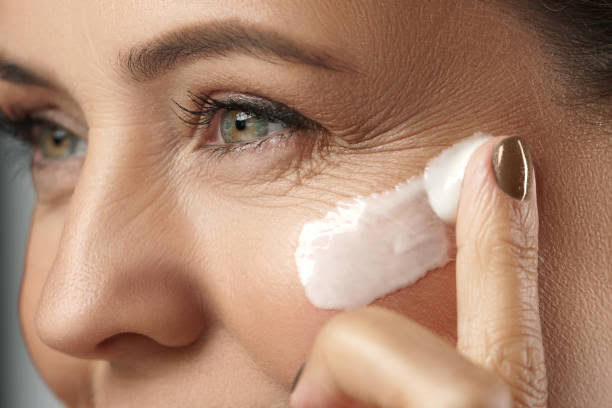Skin scientists flag online anti-aging solutions

Hyderabad: In the pursuit of youthful skin, millions turn to trending products, procedures, and home remedies promising quick results.
But dermatologists and skincare scientists are increasingly warning that not all anti-aging solutions trending online are backed by evidence, or even safe in the long term.
Some of these trends, when misused or overused, can cause more damage than the aging process itself.
1. Overuse of Retinol and Acid Peels
Retinoids, including over-the-counter retinol and prescription-strength tretinoin, are among the most well-studied anti-aging ingredients. However, their rising popularity has led many consumers to overuse them or combine them with other potent actives like AHAs (alpha hydroxy acids) and BHAs (beta hydroxy acids).
“Retinoids should be introduced gradually and monitored closely,” says Dr. Arti Reddy, consultant dermatologist at Apollo Hospitals, Hyderabad. “Layering them with exfoliating acids or using them daily without proper moisturization can compromise the skin barrier, leading to redness, flaking, and long-term sensitivity.”
Excessive exfoliation strips the skin of its natural oils and can trigger inflammation, which ironically accelerates skin aging by degrading collagen and elastin.
2. Microneedling at Home
Microneedling, using tiny needles to puncture the skin and stimulate collagen production, has gained popularity as an at-home treatment using derma rollers or stamps. While professional microneedling can be beneficial under medical supervision, at-home devices pose risks.
“Most at-home microneedling kits are not sterilized properly, and users often don’t follow post-care hygiene,” warns Dr. Shivali Yadav, aesthetic dermatologist and clinical researcher. “This significantly raises the risk of infections, post-inflammatory hyperpigmentation, and even scarring.”
In India’s humid climate, using such devices without clinical guidance can result in fungal or bacterial outbreaks, especially in acne-prone or sensitive skin types.
3. Excessive Use of Ice Therapy
Icing the face to reduce puffiness or tighten pores has become a viral beauty trend. But daily or prolonged exposure to ice, especially directly on the skin, can cause capillary damage, numbness, and even frostbite in extreme cases.
“Occasional icing may help reduce inflammation,” says Dr. Taneesha Agarwal, cosmetic physician. “But when done too frequently, it can constrict blood vessels and affect skin’s microcirculation, leading to dullness and poor nutrient delivery to skin cells.”
Instead, she suggests using cold compresses sparingly and never applying ice directly for more than a minute.
4. DIY Anti-Aging Remedies with Citrus or Essential Oils
Homemade masks using lemon juice, orange peels, or undiluted essential oils are often promoted as natural alternatives to chemical treatments. But these ingredients can cause more harm than good.
Citrus extracts contain psoralens, compounds that can make the skin photosensitive. When exposed to sunlight, they can lead to chemical burns and hyperpigmentation, a condition known as phytophotodermatitis.
“We frequently see patients with post-inflammatory pigmentation caused by lemon or orange-based masks,” says Dr. Ridha Kaur, skin specialist at Fortis. “Essential oils like tea tree or lavender, when used undiluted, can trigger allergic reactions and dermatitis.”
Natural doesn’t always mean safe. Skincare products, natural or synthetic, should always be patch tested and used in appropriate concentrations.
5. Injectable Trends Without Medical Oversight
The demand for wrinkle relaxers (like Botox) and dermal fillers has surged, often driven by influencers showcasing procedures done in non-clinical settings or “medical spas” without licensed dermatologists.
“Unregulated injections are not only unsafe, they can be disfiguring,” says Dr. Saisha Joshi, facial plastic surgeon. “Incorrect technique or unapproved products can lead to vascular occlusion, nerve damage, or asymmetry that’s difficult to reverse.”
Fillers administered into blood vessels can cause tissue death or, in severe cases, blindness. Expert evaluation, correct dosage, and post-procedure care are essential for safe outcomes.
6. Using Too Many Products or Trends Simultaneously (Skin Cycling Confusion)
The concept of “skin cycling”, rotating actives like retinol, exfoliants, and peptides across different days, has merit. However, without proper guidance, people often misapply this routine or overload their skin with too many actives in short intervals.
“Your skin needs time to adapt,” explains Dr. Meenakshi Iyer, dermatopharmacologist. “Mixing multiple anti-aging ingredients can cancel out their effects or cause inflammation. Minimalism often yields better, more sustainable results.”
7. High-Frequency Facial Devices and RF Wands
Devices using high-frequency currents or radiofrequency (RF) technology are marketed as non-invasive tools to tighten and rejuvenate the skin. While they do offer benefits when used correctly and consistently, unsupervised use can overheat the skin or cause burns.
The Indian Association of Dermatologists recommends that such devices be used under clinical supervision or after professional consultation.
8. Sunscreen Myths and Neglect
Ironically, one of the most effective anti-aging tools, sunscreen, is often underused or misunderstood in India. Trends that advocate for “natural sun exposure for vitamin D” or “sunscreen only when outdoors” continue to cause damage.
Skipping daily SPF not only hastens skin aging but also increases the risk of skin cancer and persistent pigmentation disorders, particularly in South Asian skin types.
Safe Anti-Aging: Evidence-Based Practices
Rather than following viral trends, experts suggest:
• Using sunscreen daily (broad spectrum SPF 30+)
• Introducing actives gradually and not mixing too many ingredients
• Moisturizing consistently to protect the skin barrier
• Getting regular professional skin assessments
• Avoiding DIY chemical treatments or tools without guidance
“Anti-aging is not a one-size-fits-all approach,” concludes Dr. Reddy. “It’s a lifelong routine rooted in skin health, not just aesthetic goals.”
Bottom Line
While the desire to slow down aging is understandable, it is essential to approach skincare with caution, especially when trends are driven by social media rather than science. Consulting certified dermatologists, understanding your skin type, and opting for long-term, gentle care over quick fixes is the safest and most effective path to healthy, aging skin.
Source link

